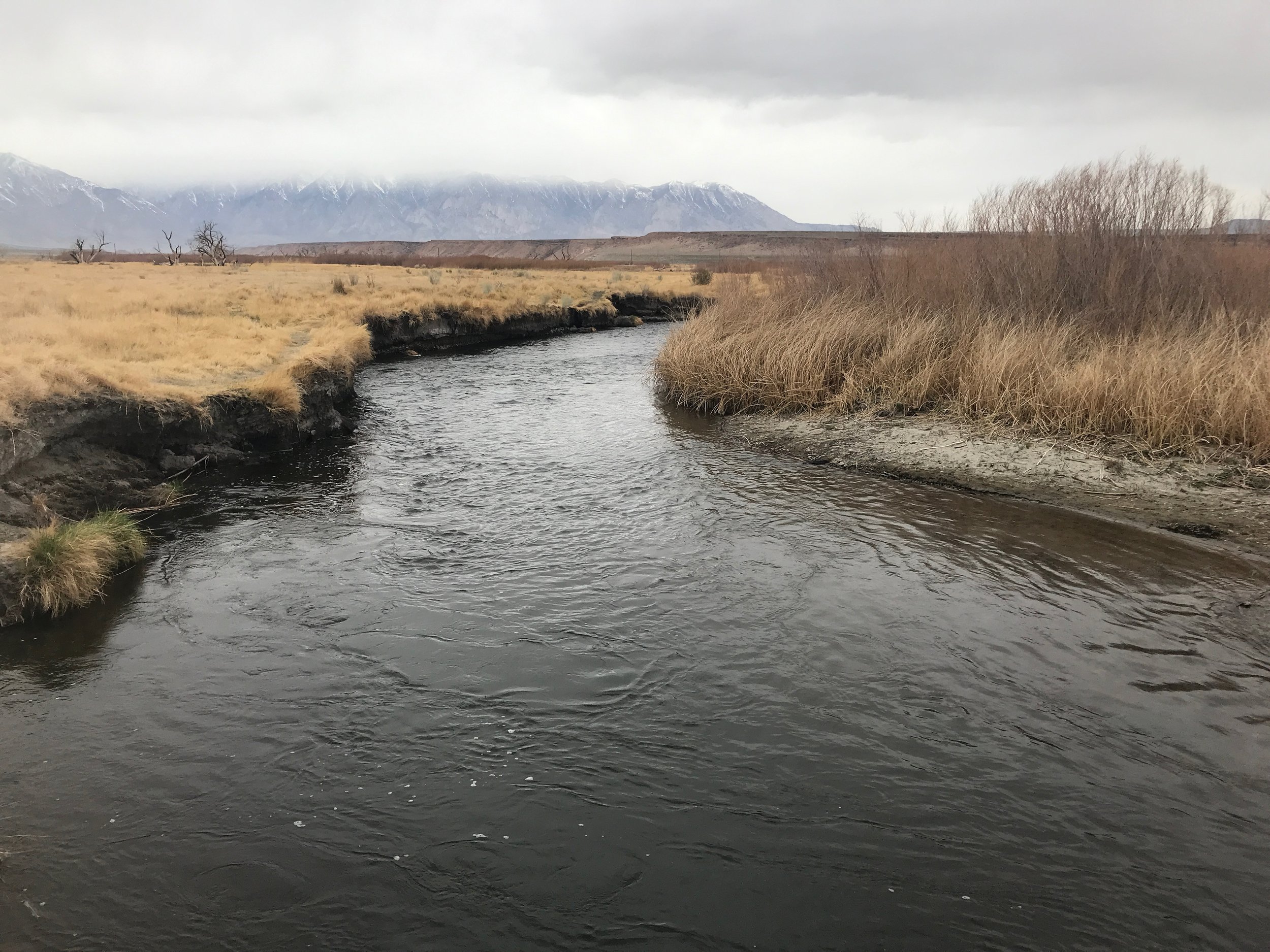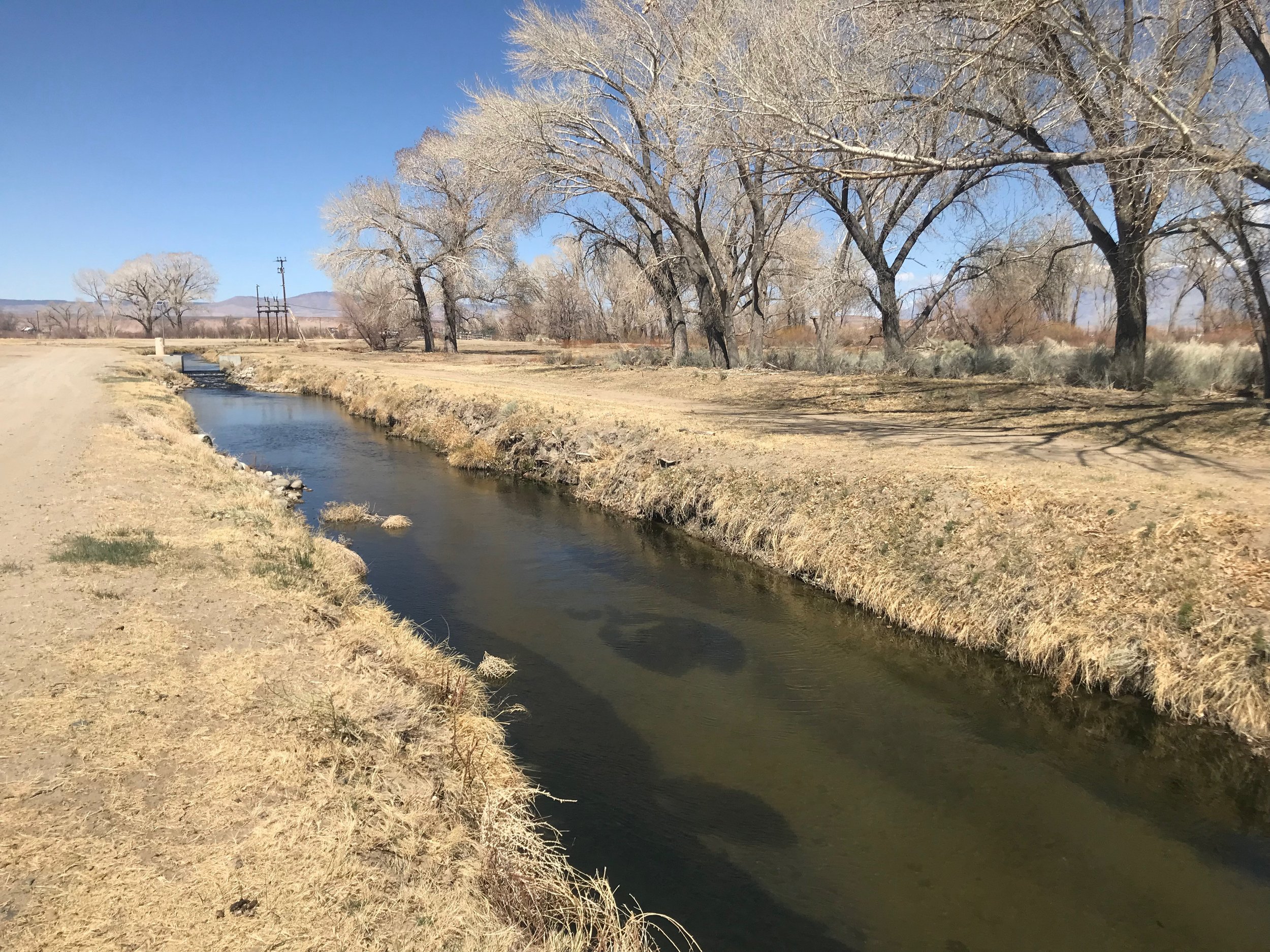Spring storms come and go quickly. Snow in the morning at upper elevations is gone by early afternoon. This week there has been a couple of spring storms moving through the area. After the storms it will warm up again and the insects will be hatching and the trout will be feeding on them. There are good hatches of midges, mayflies, and caddis flies. Most moving waters are now open to catch and release fishing year round with flies and lures. Streams up to 7,500 feet are opening up to fly fishers as winters snow recedes with springs warm days.
Spring storms are short lived and good fly fishing returns as the storms move out of the Eastern Sierra.
Lower Owens River:
Wild Trout Section:
Stormy spring days are days to be on the water as the blue wing olive hatch is intensified in these conditions. The mid-day blue wing olive hatch continues to offer great fly fishing with nymphs previous to the hatch and dries on the surface during the hatch. Not all water is created equal when it comes to the blue wing olive hatch. If the spot you’re fishing only has a few trout rising move around until you find that hole with lots of trout selectively feeding on the freshly hatching blue wing olive mayflies. First thing in the morning I’m fishing with midge nymphs and midge pupae patterns in tiger and zebra configurations. When using an indicator using two flies pays off. I like to fish a bead head flash back pheasant tail nymph about 20 inches below the midge. I put a size one split shot between the two flies and the indicator 1.5 to 2 times the average depth of water above the bottom fly.
Stormy days are a great time to get on the water as it intensifies the blue wing olive hatch.
Hot Creek:
Interpretive Site:
Mid-morning is midge time. Nymphs, pupae, and adults are being feed on by the trout. I start fishing with midge nymphs and midge pupae patterns in zebra and tiger configurations. I fish a black biot midge emerger or Griffiths gnat on the surface. Around noon is time for the blue wing olive hatch. I start fishing with bead head flash back pheasant tail nymphs and olive quilldigons an hour or two before the hatch. When the trout key in on the hatching mayflies I switch to a blue wing olive parachute or an olive sparkle dun.
Hot Creek:
Canyon Section:
With the canyon section being accessible by vehicle it is getting more fly fishing pressure. I like fishing with nymphs under a dry fly in this section. The trout are feeding on midge nymphs and pupae, and blue wing olive nymphs. I like to fish a size 16 Adams parachute with a midge or mayfly nymph two to three feet under my dry fly on 5X fluorocarbon tippet. When the trout start selectively feeding on the hatching blue wing olive mayflies I switch to a dry and dry rig. I leave the Adams parachute on and tie on a size 18 or 20 blue wing olive or olive sparkle dun on three feet of 5X or 6X monofilament tippet.
Brown trout and cutthroat trout are starting to show up in the upper Owens River.
Upper Owens River:
Above Benton Crossing Bridge:
There are still a few wet spots that fly fishers want to avoid when driving into the upper Owens River. The entire river is now accessible to fly fishers driving in. The trophy trout are starting to dissipate as the spawning season for the rainbows is coming to an end. A few cutthroats have been caught by fly fishers, but I don’t expect this run to be in the river until early May. There are a few resident brown trout being caught. Look for the trophy trout in the deep holes, runs, and cut banks where they are resting and feeding on their migration in and out of the river. Jigged stoners, green/gold Prince nymphs, and gold ribbed hare’s ears are producing the bulk of the fish. Successful fly fishers are covering lots of water to find the few pods of feeding trophy trout that are in the Owens River system.
Fly fishing on the canal has gotten tough as I can see every trout in the water and they can see me.
Bishop Creek Canal:
Behind the Ford Dealer:
This has become a tough spot to fish with the low clear water. The trout are supper spooky and require fly fishers to approach with stealth. I’m fishing with a dry and dropper and making 30 to 40 foot casts to keep from spooking the trout. I’m fishing with a size 16 Adams parachute with a midge pattern or blue wing olive nymph on three feet of 5X fluorocarbon tippet. Best fishing has been middle of the day when the blue wing olive hatch is in full swing.




